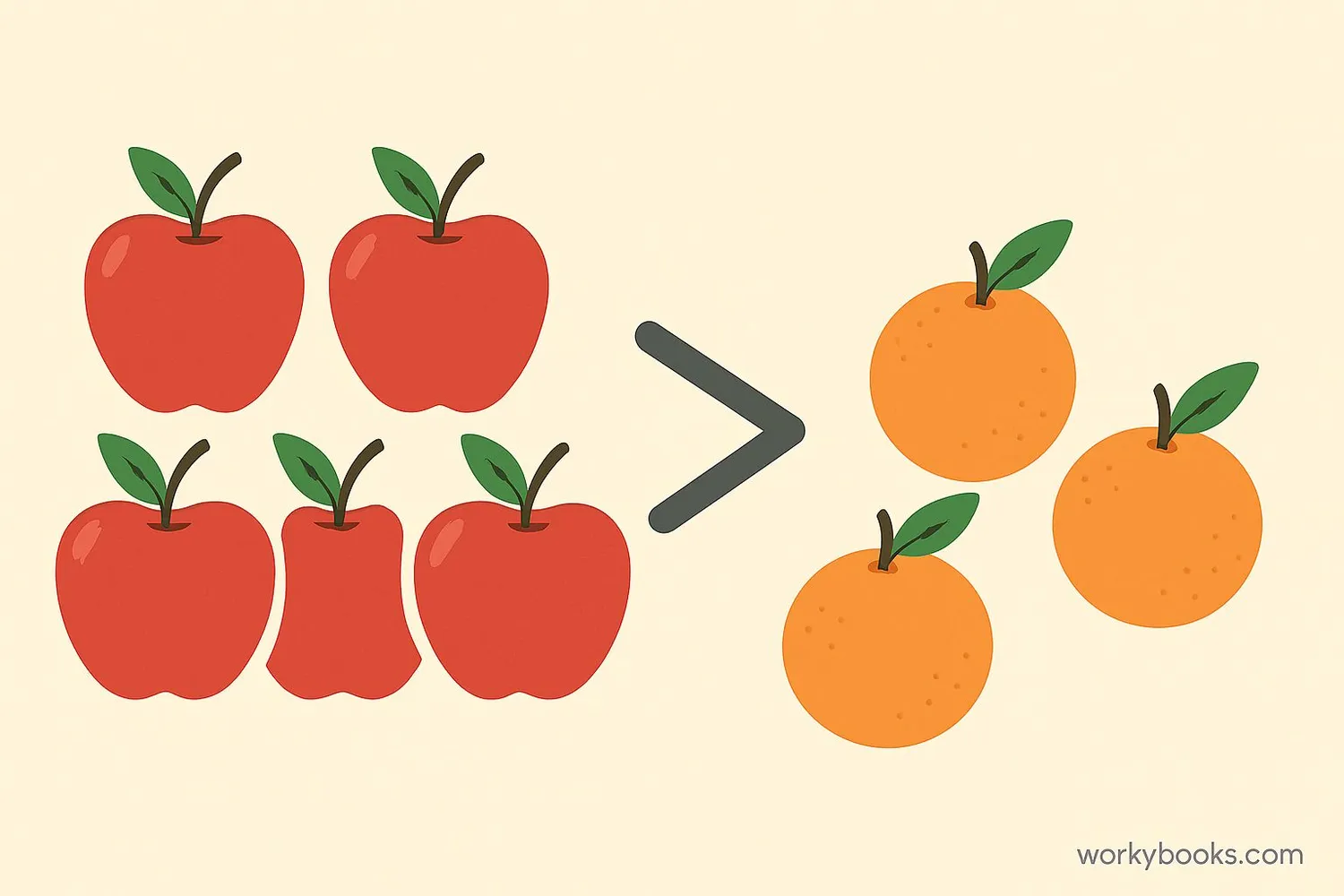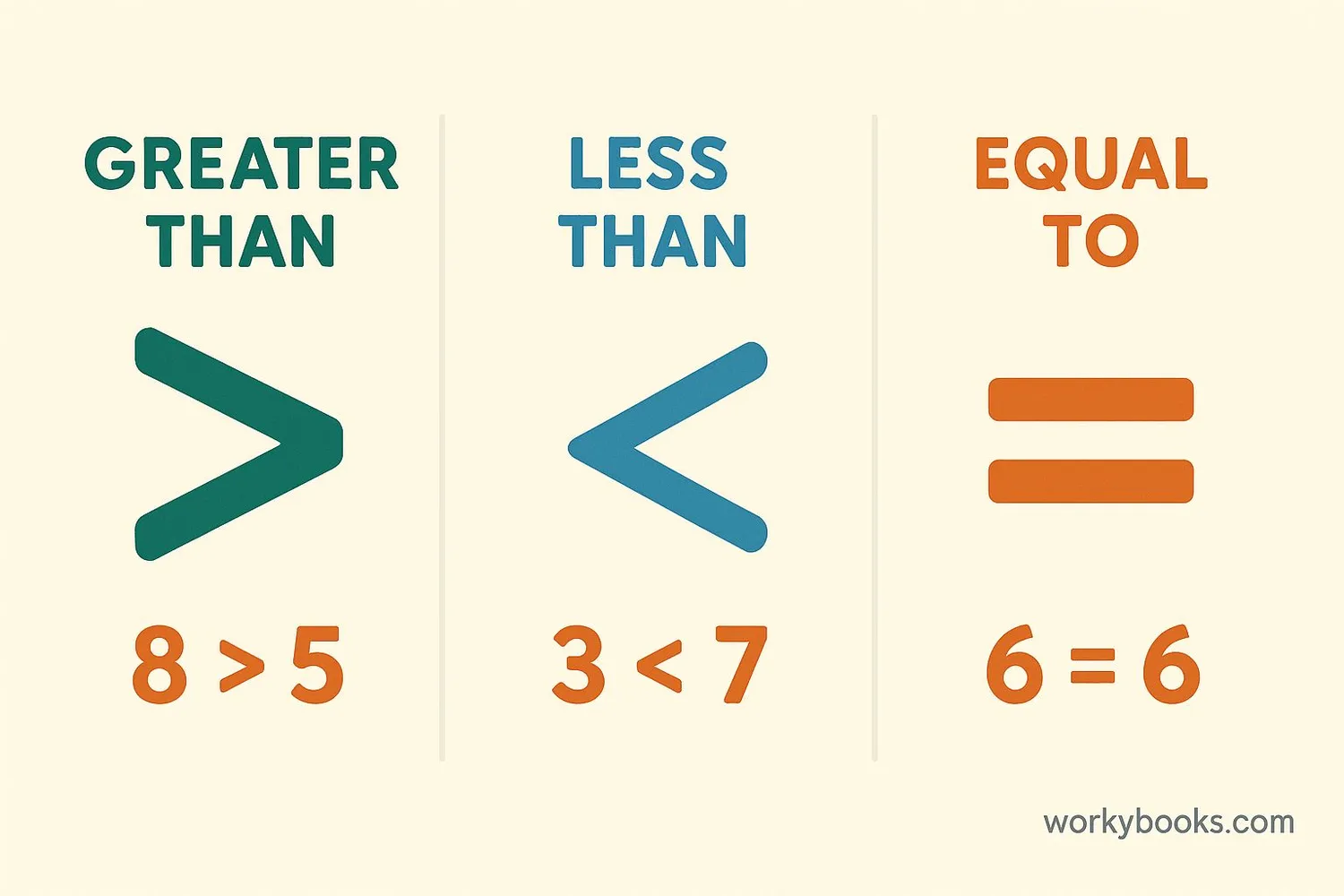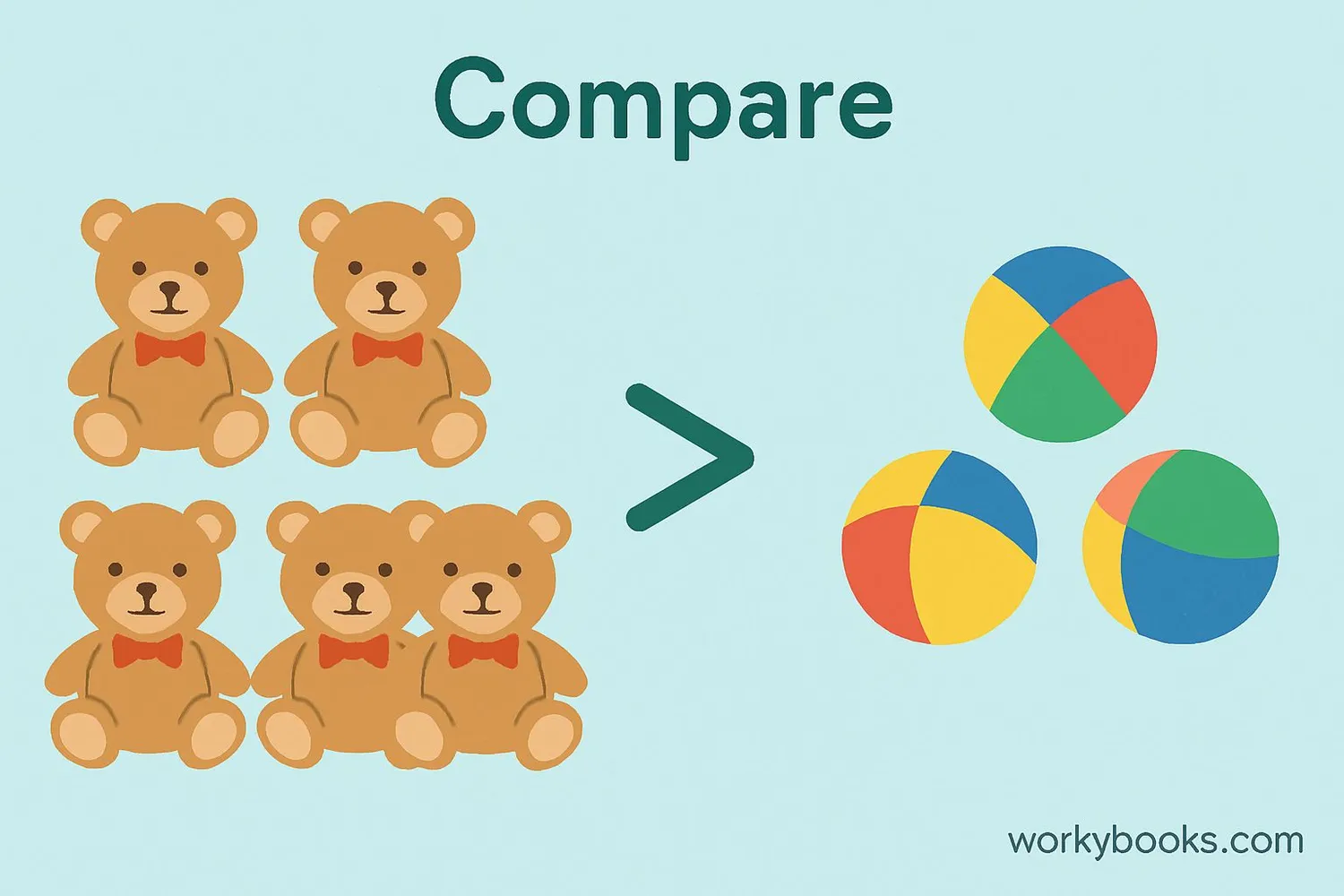Comparing in Maths - Definition, Examples, Quiz, FAQ, Trivia
Learn to compare numbers and quantities with greater than, less than, and equal to symbols
What is Comparing in Maths?

Comparing in math means looking at two or more numbers or quantities to see how they relate to each other. We compare to find out which is:
Greater than (>) - The larger number or bigger amount
Less than (<) - The smaller number or smaller amount
Equal to (=) - When both numbers or amounts are the same
We compare all the time in real life - when we choose the longer line for a slide, the taller glass of juice, or the cookie with more chocolate chips! Comparing helps us understand the world around us and make decisions.
Key Concept
Comparing helps us understand relationships between numbers and objects. It's the foundation for learning more advanced math concepts.
Comparison Symbols

We use special symbols to show how numbers compare to each other. These symbols are like math "shortcuts" that help us write comparisons quickly:
Used when the first number is larger than the second
8 > 5
Used when the first number is smaller than the second
3 < 7
Used when both numbers are the same
6 = 6
Example: 10 > 7 (The alligator mouth opens toward 10 because it's bigger)
Remember
The small point of the symbol always points to the smaller number, and the open part points to the larger number.
Comparing Quantities

We can compare quantities of objects, not just numbers. When we compare quantities, we're looking to see which group has more items or fewer items. Here's how:
1. Count the number of items in each group
2. Compare the numbers using our symbols
3. Write the comparison statement
Group A
apples
Group B
oranges
We would write this as: 5 > 3 (five is greater than three)
Example 1
There are more stars than hearts
Example 2
There are fewer pencils than crayons
Example 3
Both groups have the same number of items
Practice Tip
Practice comparing things around you - how many windows vs doors in a room, how many red cars vs blue cars on the street, how many books vs toys on your shelf!
Comparison Practice Quiz
Test your comparison skills with this 5-question quiz. Choose the correct answer for each question.
Frequently Asked Questions
Here are answers to common questions about comparing numbers and quantities:
Math Comparison Trivia
Discover interesting facts about numbers and comparison:
Ancient Comparisons
Ancient Egyptians used comparison symbols in their hieroglyphics over 5,000 years ago. They had special symbols for "greater," "less," and "equal" when trading goods and measuring land.
Symbol Origins
The greater than (>) and less than (<) symbols were first used in the 1630s by British mathematician Thomas Harriot. Before that, people wrote out "is greater than" in full!
Animals Compare Too!
Many animals compare quantities instinctively. Monkeys can compare groups of fruits, and fish can tell the difference between larger and smaller groups when choosing where to swim for safety.
Largest Number Comparison
Mathematicians compare incredibly large numbers with special notations. The largest named number is "googolplex" - a 1 followed by a googol of zeros (a googol is 10100).





